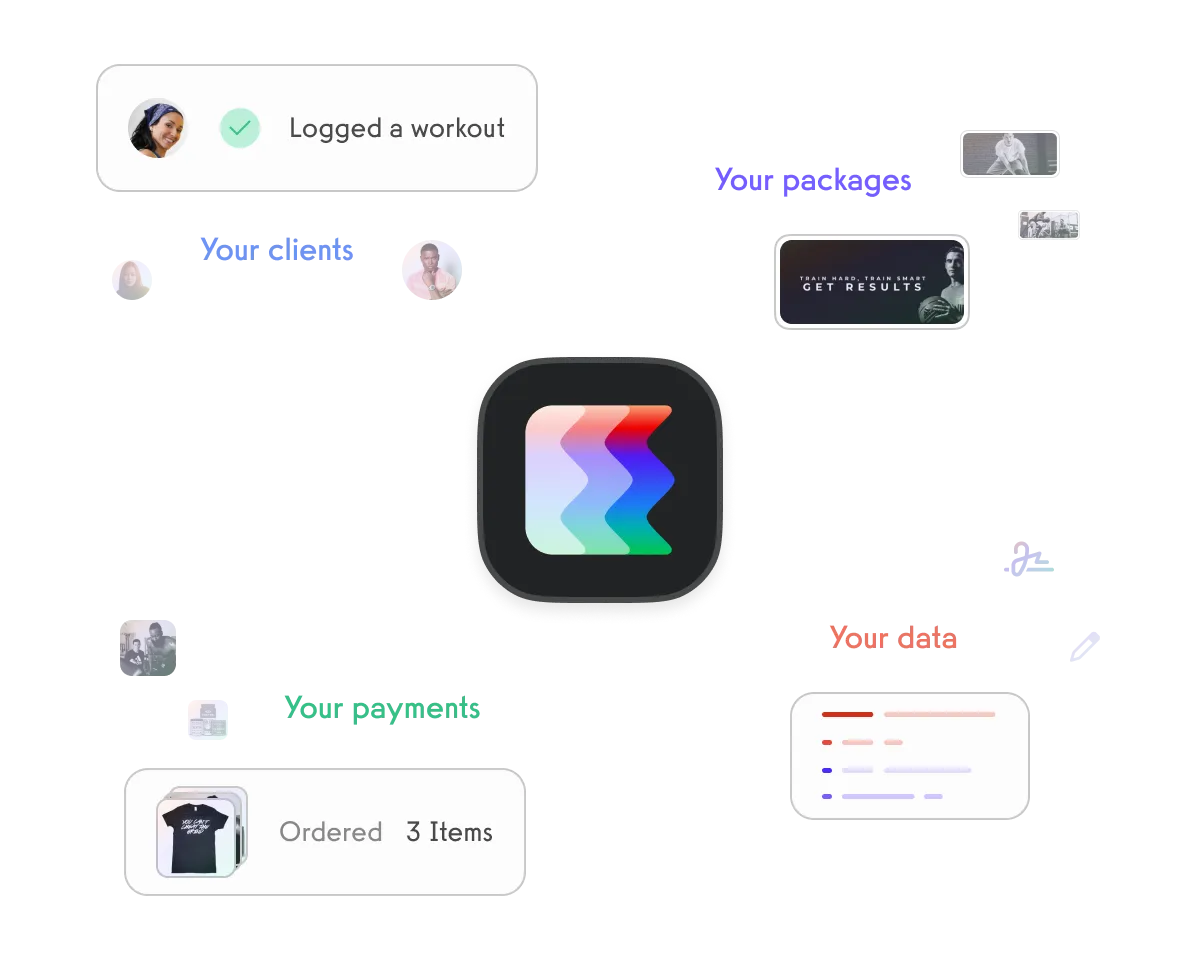Platform
Solutions
Industries
Compare
Resources
In the fitness industry, there are various roles and positions that contribute to the smooth running of a club or gym. Two such roles are that of a Club Administrator and a PTBiz, both of which play crucial parts in the overall functioning of a fitness establishment. Understanding the differences and similarities between these roles can help club owners make informed decisions about their staffing needs. In this article, we will delve into the roles and responsibilities of a Club Administrator and a PTBiz, highlight the key differences between them, and discuss the pros and cons of hiring each role.



When it comes to running a fitness club, there are several key positions that play vital roles in ensuring its success. Two of these positions are the Club Administrator and the PTBiz professional. Let’s take a closer look at what each of these roles entails.
A Club Administrator is the backbone of a fitness club, responsible for the day-to-day operations that keep everything running smoothly. They are often the first point of contact for members, greeting them with a warm smile and providing assistance whenever needed. But their responsibilities go far beyond just being friendly faces.
One of the primary tasks of a Club Administrator is managing membership registrations. They handle the paperwork, ensuring that all necessary information is collected and stored securely. They also assist new members in understanding the club’s policies, facilities, and services, making sure they feel welcomed and informed.
In addition to membership management, Club Administrators also play a crucial role in scheduling appointments. Whether it’s booking personal training sessions, reserving group fitness classes, or arranging meetings with other staff members, they are the ones who keep the club’s calendar organized and efficient.
Furthermore, Club Administrators are responsible for coordinating with other staff members to ensure seamless collaboration. They act as a bridge between different departments, facilitating effective communication and teamwork. This includes working closely with personal trainers, group fitness instructors, maintenance staff, and management to address any issues or concerns that may arise.
But that’s not all! Club Administrators also take charge of maintaining inventory. From fitness equipment to cleaning supplies, they keep track of what’s in stock and ensure that everything is well-maintained and readily available. Additionally, they play a significant role in organizing club events, such as workshops, seminars, or member appreciation days, creating opportunities for members to engage with each other and the club community.
Lastly, Club Administrators are responsible for managing member communication. They handle inquiries, feedback, and complaints, ensuring that members feel heard and valued. They also assist in resolving any conflicts or concerns that may arise, striving to create a positive and inclusive environment for everyone.
A PTBiz, short for Personal Training Business, focuses on providing personalized fitness training services to clients. PTBiz professionals often work as independent contractors or freelancers within a fitness club or studio. Their main objective is to help clients achieve their fitness goals through customized workout programs and expert guidance.
When working with clients, PTBiz professionals start by conducting fitness assessments. These assessments help them understand the client’s current fitness level, strengths, and areas that need improvement. Based on the assessment results, they design personalized workout programs tailored to the client’s specific needs and goals.
During training sessions, PTBiz professionals guide clients through exercises, ensuring proper form and technique to prevent injuries. They provide motivation and support, pushing clients to challenge themselves and reach new heights. They also monitor their clients’ progress, tracking improvements and making necessary adjustments to the workout programs as needed.
But PTBiz professionals don’t stop at just training sessions. They also play a crucial role in creating nutrition plans for their clients. They educate clients about healthy eating habits, helping them make better food choices to support their fitness journey. By combining exercise and proper nutrition, PTBiz professionals provide a holistic approach to fitness and well-being.
Moreover, PTBiz professionals often act as coaches, providing guidance and support beyond the gym. They help clients set realistic goals, develop strategies to overcome obstacles, and stay accountable to their fitness plans. They understand that fitness is not just about physical strength but also mental resilience and motivation.
In conclusion, both Club Administrators and PTBiz professionals are integral parts of a fitness club’s operations. While Club Administrators ensure smooth day-to-day functioning and member satisfaction, PTBiz professionals focus on providing personalized fitness training services and helping clients achieve their goals. Together, they contribute to creating a vibrant and thriving fitness community.
The scope of work differs significantly between a Club Administrator and a PTBiz professional. While a Club Administrator oversees the overall operations of a fitness club, including administrative and customer service tasks, a PTBiz professional focuses primarily on providing personal training services to clients. The Club Administrator’s role is more comprehensive and encompasses a broader range of responsibilities compared to that of a PTBiz professional.
As a Club Administrator, you are responsible for ensuring the smooth functioning of the fitness club. This includes managing the day-to-day operations, overseeing staff members, and handling customer inquiries. You are the go-to person for any administrative tasks and play a crucial role in maintaining the club’s reputation and customer satisfaction. Additionally, you are responsible for coordinating with vendors, creating and implementing club policies, and resolving any customer complaints that may arise.
On the other hand, as a PTBiz professional, your primary focus is on providing personalized fitness training to clients. You design customized workout programs tailored to each client’s goals and fitness level. Your expertise in exercise science, anatomy, and nutrition allows you to provide comprehensive guidance to clients, helping them achieve their desired results. You conduct one-on-one training sessions, monitor client progress, and provide ongoing support and motivation.
When it comes to skill set and qualifications, the requirements for a Club Administrator and a PTBiz professional also differ. A Club Administrator should possess excellent organizational and communication skills, as well as proficiency in administrative tasks. They may also need experience with customer service and basic accounting knowledge.
As a Club Administrator, you are the backbone of the fitness club, and your organizational skills are crucial in ensuring the efficient operation of the facility. You must be able to multitask, prioritize tasks, and manage your time effectively. Excellent communication skills are essential for interacting with staff members, customers, and vendors. Additionally, having basic accounting knowledge allows you to handle financial transactions and keep track of the club’s finances.
On the other hand, a PTBiz professional should have a strong background in fitness training, with certifications such as personal training or group exercise instruction. Additionally, PTBiz professionals should have in-depth knowledge of anatomy, exercise science, and nutrition.
As a PTBiz professional, your expertise lies in the field of fitness training. You have a deep understanding of the human body, how it moves, and the science behind effective workouts. Your certifications validate your knowledge and skills, giving clients confidence in your ability to guide them towards their fitness goals. Your knowledge of nutrition allows you to provide clients with dietary recommendations that complement their training programs, optimizing their results.
The daily tasks and responsibilities of a Club Administrator and a PTBiz professional further emphasize their differences. A Club Administrator’s day typically involves managing memberships, handling inquiries, supervising staff members, and ensuring the smooth functioning of the club. They may also be responsible for coordinating with vendors, creating and implementing club policies, and resolving customer complaints.
As a Club Administrator, your day starts with ensuring that all memberships are up to date and managing any new enrollments or cancellations. You handle customer inquiries, addressing any concerns or issues they may have. Supervising staff members is also a crucial part of your role, ensuring that everyone is performing their duties efficiently and providing excellent customer service. Coordinating with vendors ensures that the club has all the necessary equipment, supplies, and services. Creating and implementing club policies helps maintain a safe and inclusive environment for all members. Resolving customer complaints requires effective communication and problem-solving skills, ensuring that all issues are addressed promptly and to the satisfaction of the customer.
In contrast, a PTBiz professional’s daily tasks revolve around designing workout programs, conducting training sessions, monitoring client progress, and providing fitness guidance and support.
As a PTBiz professional, your day starts with designing personalized workout programs for each client, taking into account their goals, fitness level, and any specific needs or limitations. You conduct one-on-one training sessions, guiding clients through their workouts and ensuring proper form and technique. Monitoring client progress allows you to track their results and make any necessary adjustments to their training programs. Providing ongoing fitness guidance and support is essential in keeping clients motivated and helping them overcome any obstacles they may face on their fitness journey.
Although their main focus may vary, both Club Administrators and PTBiz professionals share common administrative duties. Both roles require organizational skills, attention to detail, and the ability to manage paperwork effectively. Whether it’s handling membership registrations or maintaining client records, both professionals must be proficient in administrative tasks to ensure smooth operations within the fitness establishment.
Both Club Administrators and PTBiz professionals interact with members and clients regularly, highlighting the importance of excellent customer service and communication skills in both roles. Effective communication is essential in understanding clients’ needs and goals, providing feedback and instructions clearly, and resolving any issues that may arise. Both professionals should have the ability to build rapport with clients and create a positive experience within the fitness facility.
Financial management is another area where similarities between Club Administrators and PTBiz professionals emerge. While a Club Administrator may handle the financial transactions related to membership fees, payments, and vendor expenses, a PTBiz professional may manage client payments and financial aspects related to their personal training services. Both roles require a basic understanding of financial management to ensure accurate record-keeping and financial sustainability for the business or club.
One advantage of hiring a Club Administrator is that they can handle a wide range of administrative tasks, allowing other staff members to focus on their specific roles. A Club Administrator can also streamline processes, improve member satisfaction, and enhance overall club efficiency. With their organizational skills, they can manage schedules and coordinate various club events effectively. Additionally, having a dedicated Club Administrator can help improve communication between members, staff, and management.
On the other hand, hiring a Club Administrator may increase business costs, as it adds an additional salaried position to the staff. In smaller fitness establishments, the workload may not warrant a full-time Club Administrator, making it a less cost-effective choice. Furthermore, finding a qualified and experienced Club Administrator who aligns with the club’s values and vision can be challenging.
One of the primary advantages of hiring a PTBiz professional is the expertise they bring to the fitness establishment. Clients benefit from personalized training programs tailored to their specific goals and needs. Hiring a PTBiz professional can also attract clients who are seeking dedicated and individualized fitness services. In addition, PTBiz professionals generally work as independent contractors, which can offer greater flexibility in terms of scheduling and financial arrangements.
One potential disadvantage of hiring a PTBiz professional is that they may have limited availability, especially if they work with clients outside the fitness establishment. This can hinder the coordination of schedules and client bookings. Furthermore, since PTBiz professionals operate as independent contractors, there might be limited control over their work practices or the quality of services they provide.
In conclusion, both Club Administrators and PTBiz professionals play integral roles in the functioning of a fitness club. While a Club Administrator focuses on overall club operations and administrative tasks, a PTBiz professional provides personalized fitness training services. Understanding the key differences and similarities between these roles is crucial in determining which position best suits the needs of a fitness establishment.

